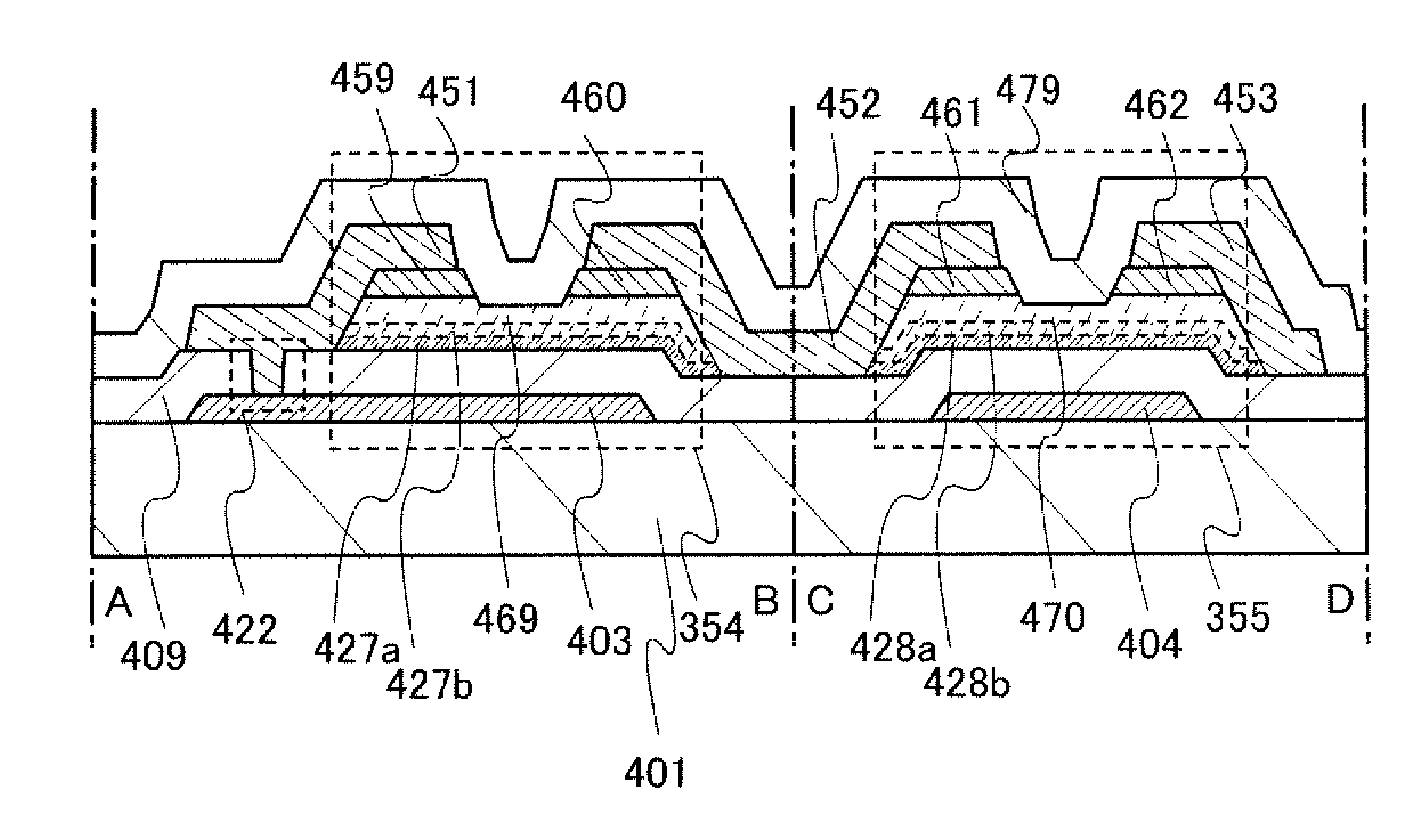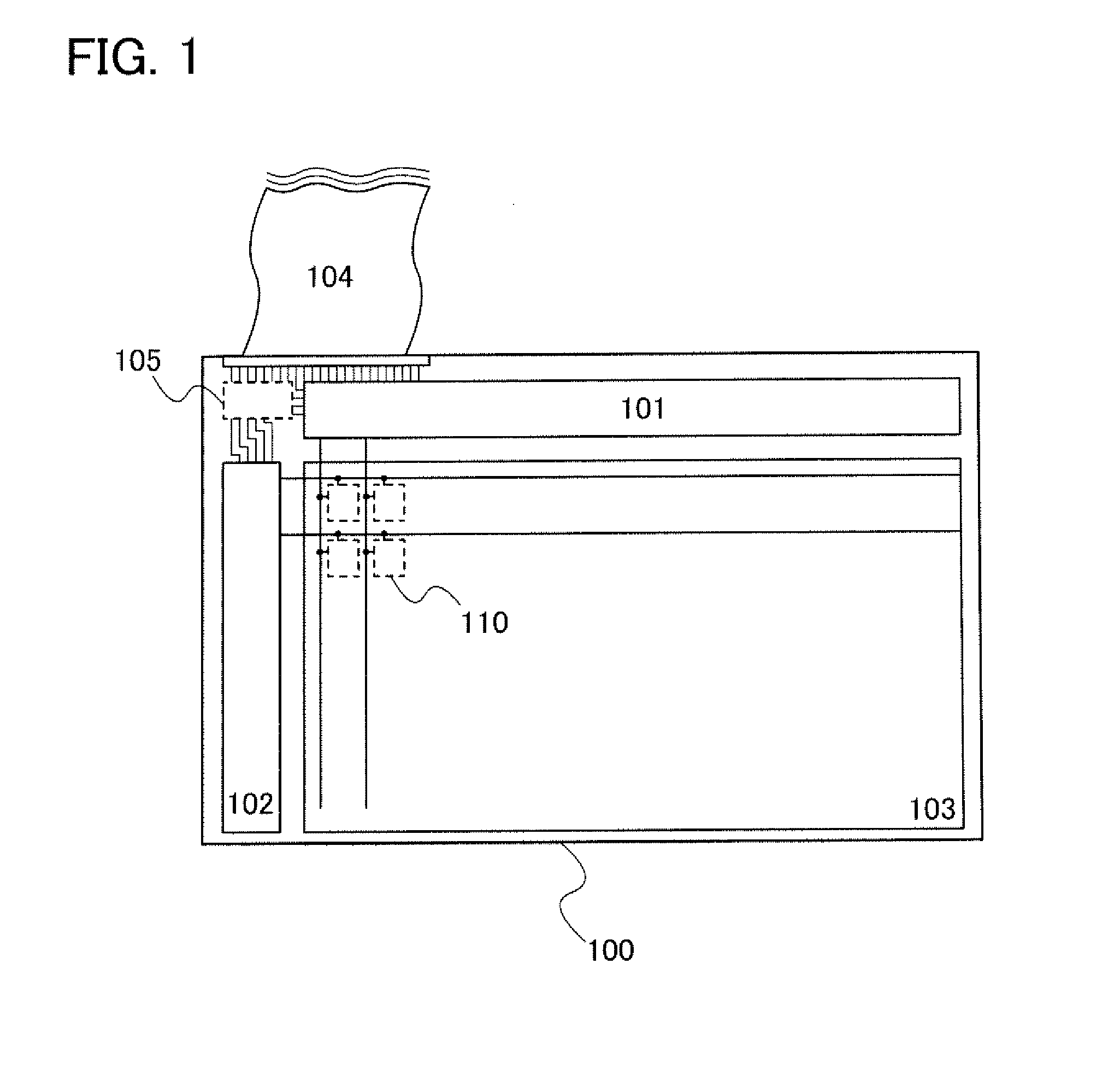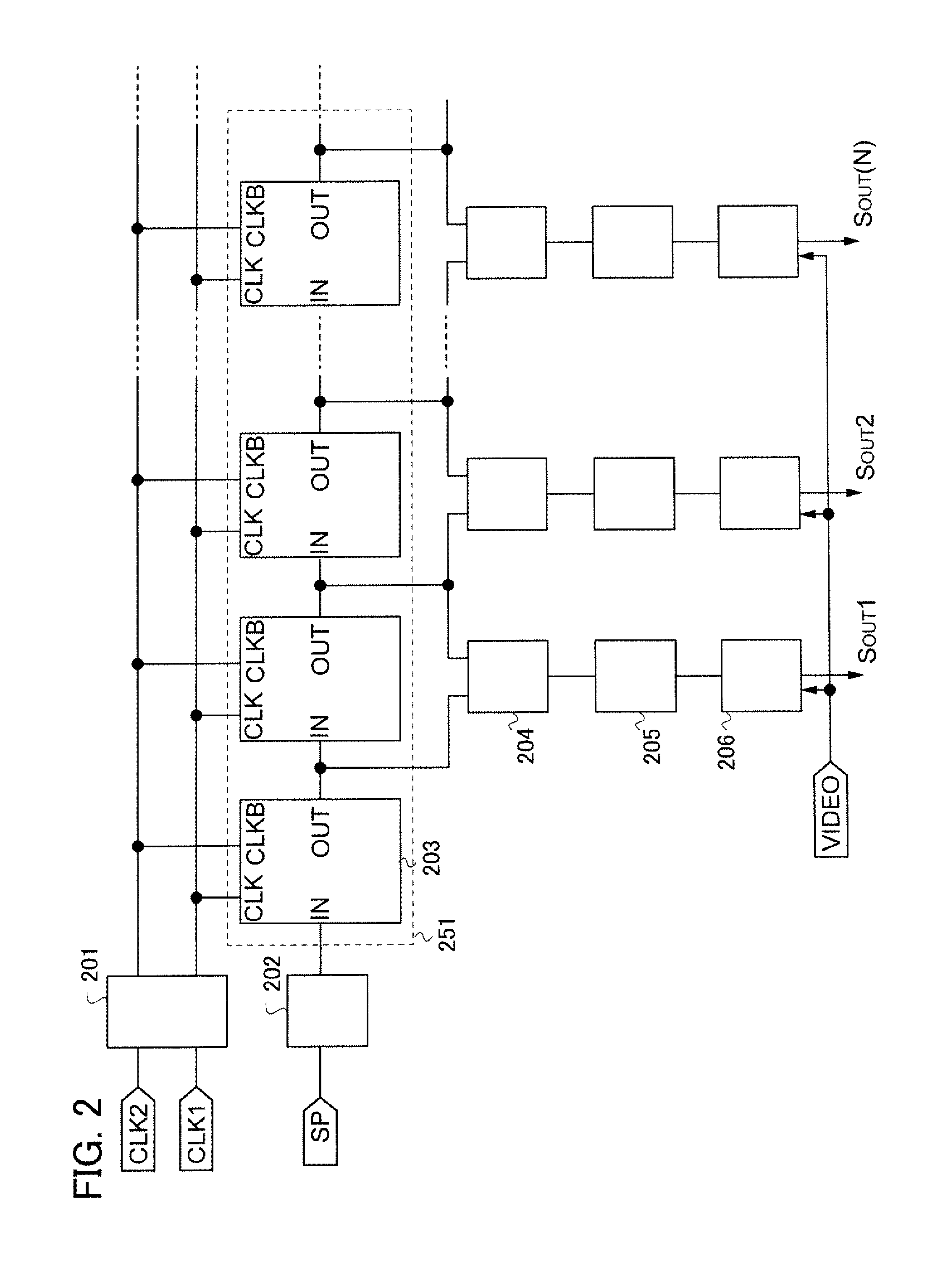Display device
a display device and display technology, applied in the field of display devices, can solve the problems of low field effect mobility, deterioration of thin film transistors, low current, etc., and achieve the effects of reducing manufacturing costs of display devices, narrowing the frame size of display devices, and improving image display characteristics
- Summary
- Abstract
- Description
- Claims
- Application Information
AI Technical Summary
Benefits of technology
Problems solved by technology
Method used
Image
Examples
embodiment 1
[0057]In this embodiment, n-channel thin film transistors forming a driver circuit are used as unipolar thin film transistors each including a microcrystalline semiconductor. As driver circuits for driving a pixel portion, an example of a source line driver circuit and / or an example of a gate line driver circuit are / is described, so that advantages of this embodiment will be described.
[0058]FIG. 1 illustrates an overall schematic view of a display device. A source line driver circuit 101, a gate line driver circuit 102, and a pixel portion 103 are formed together over a substrate 100. In the pixel portion 103, a portion surrounded by a dotted frame 110 corresponds to one pixel. FIG. 1 illustrates a structure in which the gate line driver circuit 102 is provided at one end portion; however, a plurality of gate line driver circuits 102 may be provided. In pixels of the display device, display elements are controlled by thin film transistors (hereinafter referred to as TFTs). Signals (...
embodiment 2
[0211]In the above embodiment, one example of a shift register formed using a static circuit as a shift register in a driver circuit of a display device is described. In this embodiment, one example of a driver circuit including a shift register formed using a dynamic circuit will be described.
[0212]A structure of a pulse output circuit included in a shift register formed using a dynamic circuit will be described with reference to FIGS. 17A to 17D. A pulse output circuit 1400 illustrated in FIG. 17A includes, as one example, an inverter circuit 1401 to which a start pulse SP is input from an input terminal, a switch 1402 whose one terminal is connected to an output terminal of the inverter circuit 1401, and a capacitor 1403 which is connected to the other terminal of the switch 1402. Note that on / off of the switch 1402 of the pulse output circuits of odd-numbered stages is controlled by the first clock signal (CLK1). Further, on / off of the switch 1402 of the pulse output circuits of...
embodiment 3
[0222]In this embodiment, a basic structure of a shift register of a display device with less variation in a threshold voltage will be described with reference to drawings. FIG. 19 illustrates a flip-flop of one stage (e.g., a first stage), which is one of a plurality of flip-flops included in a shift register.
[0223]The flip-flop shown in FIG. 19 includes a first thin film transistor 1301, a second thin film transistor 1302, a third thin film transistor 1303, a fourth thin film transistor 1304, and a fifth thin film transistor 1305. Note that the flip-flop is connected to a first wiring 1311, a second wiring 1312, a third wiring 1313, a fourth wiring 1314, a fifth wiring 1315, a sixth wiring 1316, and a seventh wiring 1317. In this embodiment, the fifth thin film transistor 1305 is an n-channel thin film transistor and is turned on when gate-source voltage (Vgs) exceeds the threshold voltage (Vth). Note that the seventh wiring 1317 may be called a third signal line.
[0224]A first ter...
PUM
 Login to View More
Login to View More Abstract
Description
Claims
Application Information
 Login to View More
Login to View More - R&D
- Intellectual Property
- Life Sciences
- Materials
- Tech Scout
- Unparalleled Data Quality
- Higher Quality Content
- 60% Fewer Hallucinations
Browse by: Latest US Patents, China's latest patents, Technical Efficacy Thesaurus, Application Domain, Technology Topic, Popular Technical Reports.
© 2025 PatSnap. All rights reserved.Legal|Privacy policy|Modern Slavery Act Transparency Statement|Sitemap|About US| Contact US: help@patsnap.com



